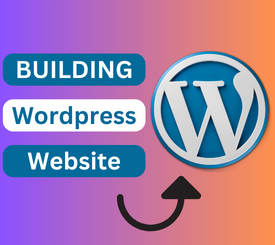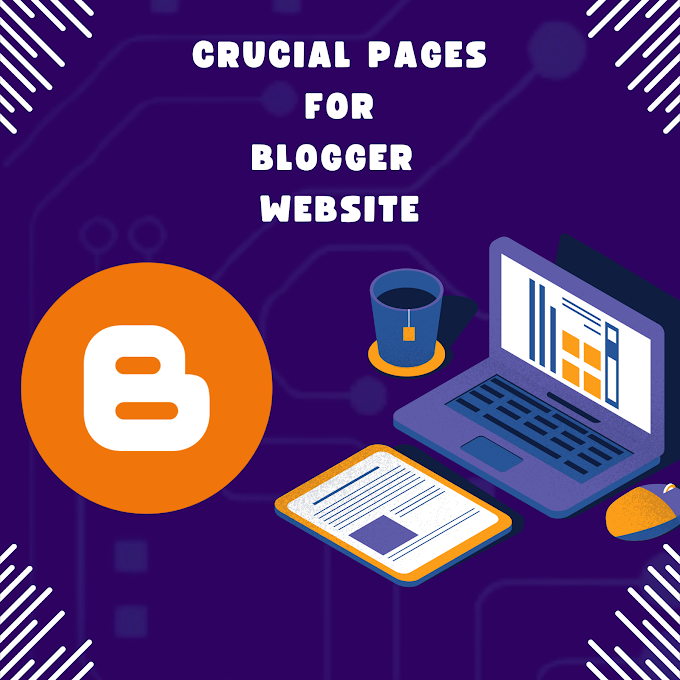As we assist you in creating your website, discover the potential of WordPress. With the most widely used content management system, start your adventure to create an online presence from setup to personalization.
Building a strong online presence is crucial in the broad world of the internet, and WordPress is a particularly strong and adaptable Content Management System (CMS) platform. We'll delve deeply into WordPress in this extensive guide, designed specifically for CMS enthusiasts visiting Dev Dazzle Solutions. Come along as we go over how to create a website from the bottom up, giving you complete control and creative freedom.
Understanding the Power of WordPress
WordPress is more than just a platform; it's an ecosystem powered by the community that enables both individuals and companies to build beautiful websites. WordPress has an intuitive user interface that makes website creation easier for all skill levels of developers.
Why Choose WordPress for Your Website
- User-Friendly Interface: WordPress boasts an intuitive dashboard, making it easy for beginners to navigate and manage their websites.
- Versatility: From blogs and portfolios to e-commerce sites, WordPress caters to a wide range of website needs.
- Themes and Plugins: Customize your website with a plethora of themes and plugins, allowing you to achieve the desired look and functionality effortlessly.
Step-by-Step Guide to Build Your Website with WordPress
Step 1: Choose Your Domain and Hosting
- Select a unique domain name that represents your brand. Choose reliable hosting to ensure your website performs optimally.
Step 2: Install WordPress
- Most hosting providers offer a one-click WordPress installation. Follow the prompts to set up your WordPress instance effortlessly.
Step 3: Access the WordPress Dashboard
- Log in to your WordPress dashboard. This is your command center, where you'll manage everything related to your website.
Step 4: Choose and Customize Your Theme
- Explore the wide array of WordPress themes and choose one that aligns with your brand. Customize the theme settings to make it uniquely yours.
Step 5: Create Essential Pages
- Craft essential pages such as Home, About Us, Contact, and any other relevant pages your website needs.
Step 6: Set Up Navigation Menus
- Create a user-friendly navigation menu to help visitors easily navigate through your website. Include links to your essential pages.
Step 7: Configure Basic Settings
- Adjust your website's basic settings, including the site title, tagline, and time zone, to ensure accurate representation.
Step 8: Leverage the Block Editor
- Utilize the powerful block editor to create engaging content. Experiment with different blocks to structure your pages and posts.
Step 9: Add Media and Multimedia Elements
- Enhance your content by incorporating images, videos, and other multimedia elements. WordPress makes it simple to upload and embed media.
Step 10: Install Essential Plugins
- Explore and install plugins that add functionality to your website. Consider SEO plugins, security plugins, and any others relevant to your goals.
Step 11: Optimize for SEO
- Implement SEO best practices within WordPress. Optimize your content, meta tags, and images to improve search engine visibility.
Step 12: Ensure Responsive Design
- Check your website's responsiveness on various devices. WordPress themes are generally responsive, but it's crucial to confirm.
Step 13: Test Performance and Speed
- Use performance optimization plugins to ensure your website loads quickly. A fast website enhances the user experience.
Step 14: Set Up Analytics
- Integrate Google Analytics to track your website's performance. Analyze visitor behavior to make informed decisions.
Step 15: Engage with the WordPress Community
- Join forums, groups, and communities to connect with other WordPress users. Share your experiences, seek advice, and stay updated on the latest trends.
By following these 15 steps, you'll not only build a website with WordPress but also create a strong foundation for a successful online presence. Remember, WordPress is a dynamic and versatile platform—explore, experiment, and enjoy the journey of shaping your digital space.
Building Engaging Content with WordPress
- Create Pages and Posts: Use the WordPress editor to craft engaging pages and posts. Leverage the block editor for a dynamic and visually appealing layout.
- Media Integration: Enhance your content with images, videos, and other media. WordPress makes it easy to upload and embed multimedia elements.
Optimizing Your WordPress Website
- SEO Best Practices: Implement SEO strategies within WordPress to improve your website's visibility on search engines.
- Performance Optimization: Install plugins and tools to optimize your website's speed and performance for an enhanced user experience.
The WordPress Community: A Valuable Resource
Tap into the vast WordPress community for support, advice, and inspiration. Forums, blogs, and social media groups provide a wealth of knowledge for both beginners and experienced users.Conclusion:
As we near the conclusion of our course on using WordPress to create a website, remember that WordPress is a gateway to a world of endless possibilities. With WordPress's vast theme and plugin library and user-friendly interface, you can easily tailor your online presence to your own unique style.
In conclusion, using WordPress to create your website offers up a world of creativity and utility for everyone involved—web developers, CMS enthusiasts, and business owners alike. With WordPress' magic, embrace the ride, let your imagination run wild, and watch your online presence grow. Launch your website right now to introduce the world to your Dev Dazzle solutions!
In conclusion, using WordPress to create your website offers up a world of creativity and utility for everyone involved—web developers, CMS enthusiasts, and business owners alike. With WordPress' magic, embrace the ride, let your imagination run wild, and watch your online presence grow. Launch your website right now to introduce the world to your Dev Dazzle solutions!
FAQ's
1. Can I use WordPress to build my website?
- Of course! Using WordPress to create your website is a great option. WordPress has an extensive theme and plugin library, an intuitive user interface, and a helpful community, as described in our in-depth tutorial. WordPress gives developers of all skill levels the resources they need to build a visually appealing and useful website.
2. Is it free to build a website with WordPress?
- Indeed, using WordPress to create a website can be completely free. Themes, initial setup, and basic functions are free of charge. Although you may buy premium themes and plugins, you don't need to pay a thing to build a fully functional website.
3. Is WordPress a good website builder?
- Of course! WordPress is among the greatest website builders available, not just a good one. Both people and corporations find it to be highly customizable and versatile, because to its wide customization possibilities and user-friendly interface.
4. How much does it cost to build a WordPress website?
- The price to develop a WordPress website can differ. As previously stated, the basic setup is free; however, custom domains, premium themes, and plugins may incur additional costs. Although there are affordable hosting solutions, hosting expenses are still a consideration.
5. Is Wix better than WordPress?
- WordPress and Wix both offer advantages, however in this case, we're more interested in the strength and adaptability of WordPress. Although Wix is a website builder, WordPress provides more themes and plugins, a larger community, and more customization options.
6. Can I create a free website?
- Yes, you can use WordPress to make a free website. You may get started with a free subdomain and minimal features on platforms like WordPress.com. However, spending money on a custom domain and hosting is advised for a more polished and branded appearance.
7. Is Shopify better than WordPress?
- Based on your unique requirements, yes. While WordPress is a flexible content management system (CMS) that can be customized for a variety of uses, including e-commerce, Shopify is a dedicated e-commerce platform. The decision between WordPress and Shopify is based on your company's needs and preferences.
8. What are the disadvantages of WordPress?
- Even if WordPress is a strong platform, there may be drawbacks that need to be taken into account. These could include the requirement for frequent upgrades, possible security flaws (which could be fixed with the right security measures), and a learning curve for newcomers. But these problems are frequently outweighed by the advantages.
9. Is WordPress useful in 2023?
- Naturally, of course! WordPress is still a very useful and relevant platform in 2024. WordPress adapts to the constantly changing demands of the online world with regular updates, a vibrant community, and a vast ecosystem of themes and plugins.
10. Can I pay WordPress monthly?
- While WordPress is free to use, in order to have your website live on the internet, you will need to pay for hosting. The majority of hosting companies give monthly payment plans, which let customers easily keep track of their spending. Furthermore, you could have to pay different prices for premium themes or plugins if you choose to use them.






.png)


